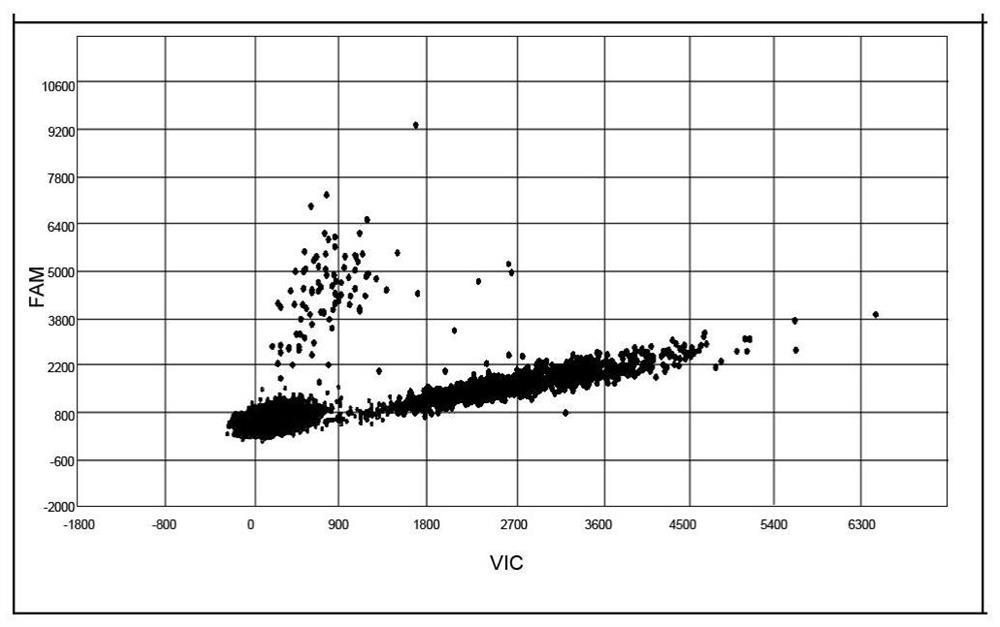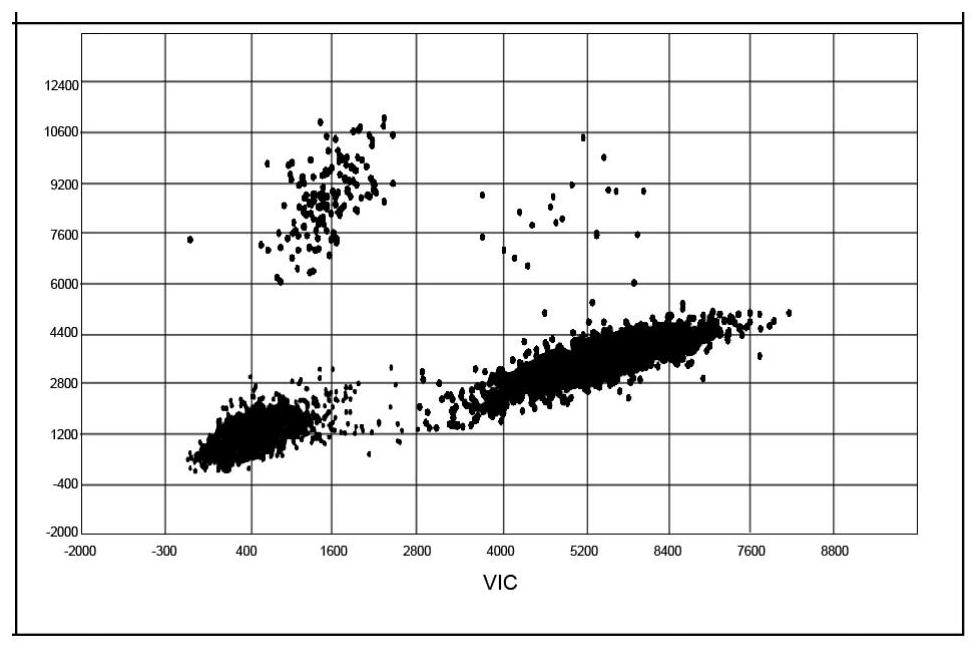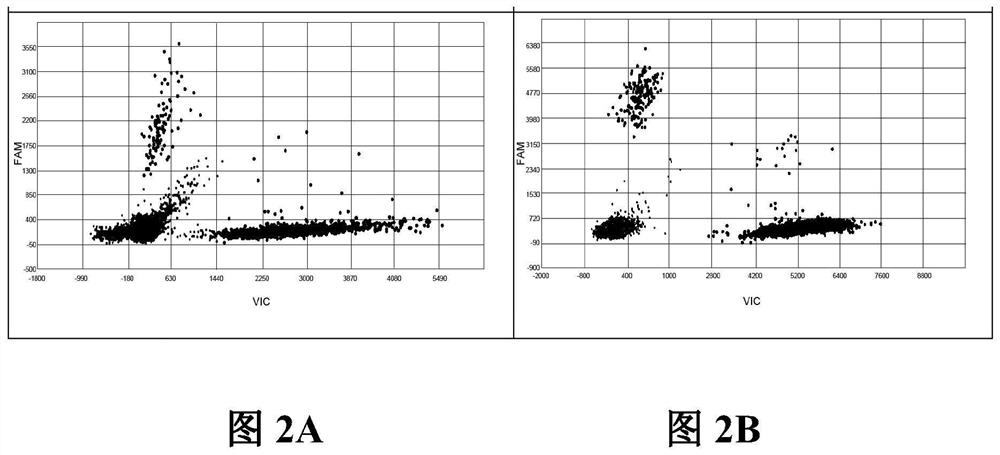Primer probe composition, kit and method for detecting EGFR specific gene mutation by 3D digital PCR
A primer probe and kit technology, applied in the field of 3D-PCR detection, can solve problems such as low detection sensitivity, and achieve the effects of high detection efficiency and intuitive and clear results.
- Summary
- Abstract
- Description
- Claims
- Application Information
AI Technical Summary
Problems solved by technology
Method used
Image
Examples
Embodiment 1
[0092] Example 1: Detection of the effect of the primer probe of the kit of the present application
[0093] 1. Prepare the primer probe of the application kit
[0094] The primers and probes of EGFR in Table 1 were selected; the primers and probes of other synthesized EGFRs in Table 7 were selected for comparison.
[0095] Table 7
[0096]
[0097]
[0098] 2. Amplification Reagent Preparation
[0099] Take out the corresponding PCR reaction solution from the kit, melt and mix at room temperature, centrifuge at 2000rpm for 10s, and prepare the PCR premix solution for each test as follows. The preparation system is shown in Table 8:
[0100] Table 8
[0101] Reagent components Add volume (uL) 2×QuantStudio 3D Digital PCR Mix 7.5 Primer Probe Mix 0.375 dna sample 30ng ddH2O Make up to a total volume of 15ul
[0102] 3. Add sample
[0103] Load 14.5ul of the reaction system onto the digital PCR chip.
[0104] 4.PCR amplificat...
Embodiment 2
[0111] Example 2: The minimum detection limit detection of the kit of this application
[0112] 1. Preparation of minimum detection limit quality control products
[0113] EGFR gene T790M, L858R and 19del (2235-2249 and 2236-2250) mutations and negative cell line genomic DNA were selected and mixed in proportion to prepare minimum quality control products for each mutant.
[0114] A sample with a DNA template amount of 30ng and a mutation ratio of 0.2% was used as a detection limit quality control product in this embodiment. The minimum detection limit quality control products are specifically shown in Table 9:
[0115] Table 9
[0116]
[0117] 2. Other steps are the same as in Example 1
[0118] 3. The test was repeated 20 times, and the experimental results obtained from the test are shown in Table 10:
[0119] Table 10
[0120] name qualitative results EGFR T790M positive EGFR L858R positive EGFR 2235-2249del positive EGFR 2236...
Embodiment 3
[0122] Example 3: Repeatability detection of the kit of the present application
[0123] 1. Preparation of duplicate quality control products
[0124] Select EGFR gene T790M, L858R and 19del (2235-2249 and 2236-2250) mutated DNA and EGFR-negative cell line genomic DNA to mix in proportion to prepare a sample with a mutation ratio of 1% as a repetition of this example Quality Controls. Specifically as shown in Table 11:
[0125] Table 11
[0126]
[0127] 2. Other steps are the same as in Example 1
[0128] 3. Repeat the test 10 times, and the experimental results obtained from the test are shown in Table 12-Table 15:
[0129] Table 12
[0130]
[0131] It can be known from the experimental results in Table 12 that the positive coincidence rate of the test results is 100% after repeated inspections 10 times.
[0132] Table 13
[0133]
[0134] It can be seen from the experimental results in Table 13 that the positive coincidence rate of the test results is 100% ...
PUM
 Login to View More
Login to View More Abstract
Description
Claims
Application Information
 Login to View More
Login to View More - R&D
- Intellectual Property
- Life Sciences
- Materials
- Tech Scout
- Unparalleled Data Quality
- Higher Quality Content
- 60% Fewer Hallucinations
Browse by: Latest US Patents, China's latest patents, Technical Efficacy Thesaurus, Application Domain, Technology Topic, Popular Technical Reports.
© 2025 PatSnap. All rights reserved.Legal|Privacy policy|Modern Slavery Act Transparency Statement|Sitemap|About US| Contact US: help@patsnap.com



